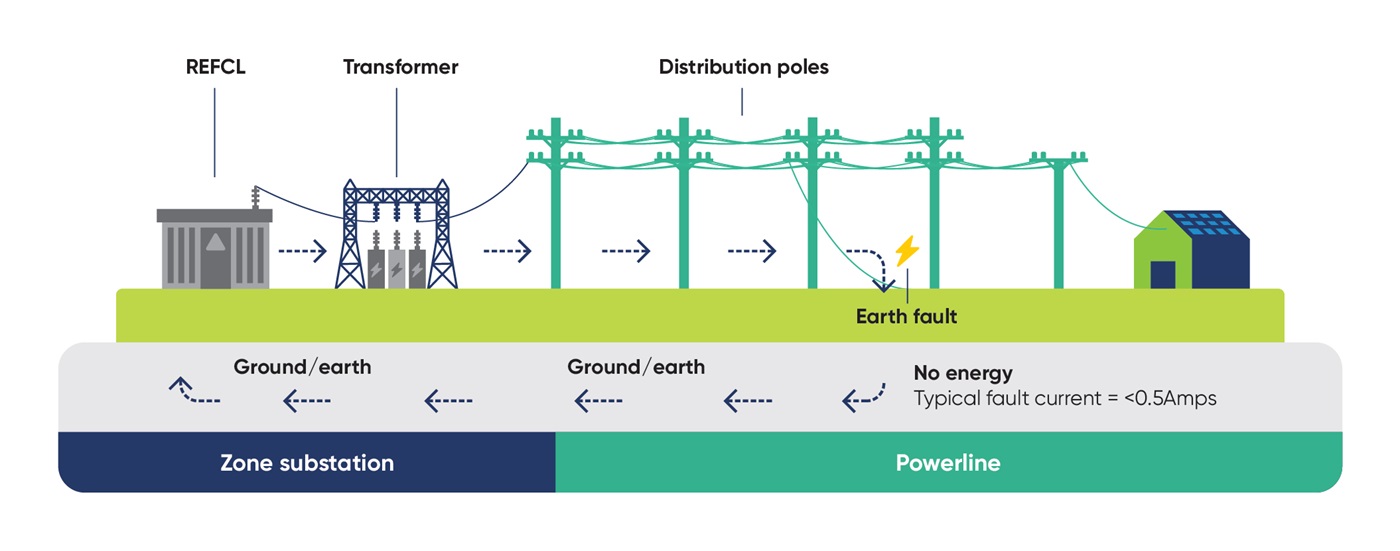What is a REFCL and how does it work?
REFCLs act like a giant safety switch by limiting the energy released when an earth fault occurs on a powerline. An earth fault occurs when:
- a powerline falls to the ground
- tree branches touch the powerline
- wildlife comes into contact with the powerline.
When a REFCL detects a fault, it reduces the power to that line within a tenth of a second and at the same time, increases the voltage on the remaining two lines. This means power can keep flowing to surrounding homes and businesses.
After a few minutes, the REFCL checks whether the fault is still there. If the fault has cleared (such as a tree branch falling on the line but then falling away), power will be restored, and in many cases, customers won’t notice any power disruptions.
If the fault is still there (such as a tree falling across the powerlines) the REFCL will cut power to all three lines, so crews can safely assess and repair the line.
Since installation, our REFCLs have operated thousands of times.
For more information, download our REFCL fact sheet (PDF, 619 KB)

Network testing
We regularly test REFCLs to make sure they're working safely and reliably. Learn more about Bushfire mitigation testing.
Total Fire Ban (TFB) days
During TFB days, our REFCLs are set to their highest, most sensitive setting. On these days, at this high setting, a REFCL is more likely to cut power if it detects the smallest fault. When a fault is detected on a REFCL line on a TFB day, our crews must physically patrol the entire line to confirm it’s safe to turn the power back on. This on-the-ground protocol can increase the potential for prolonged outages.
Last year, we installed new technology on the Benalla-Euroa powerline. At more than 1,200 kms, this line is the longest in our electricity distribution network. To reduce the time it takes to physically patrol the whole line before we can turn the power back on, this new technology works with the REFCL system to help us quickly find where a fault is. This allows our control room to send crews directly to the specific fault area, rather than having to patrol the entire 1200 kms. This makes fault detection and repair much faster and more efficient.
Find a REFCL
To find a REFCL near you. visit REFCL lookup.




